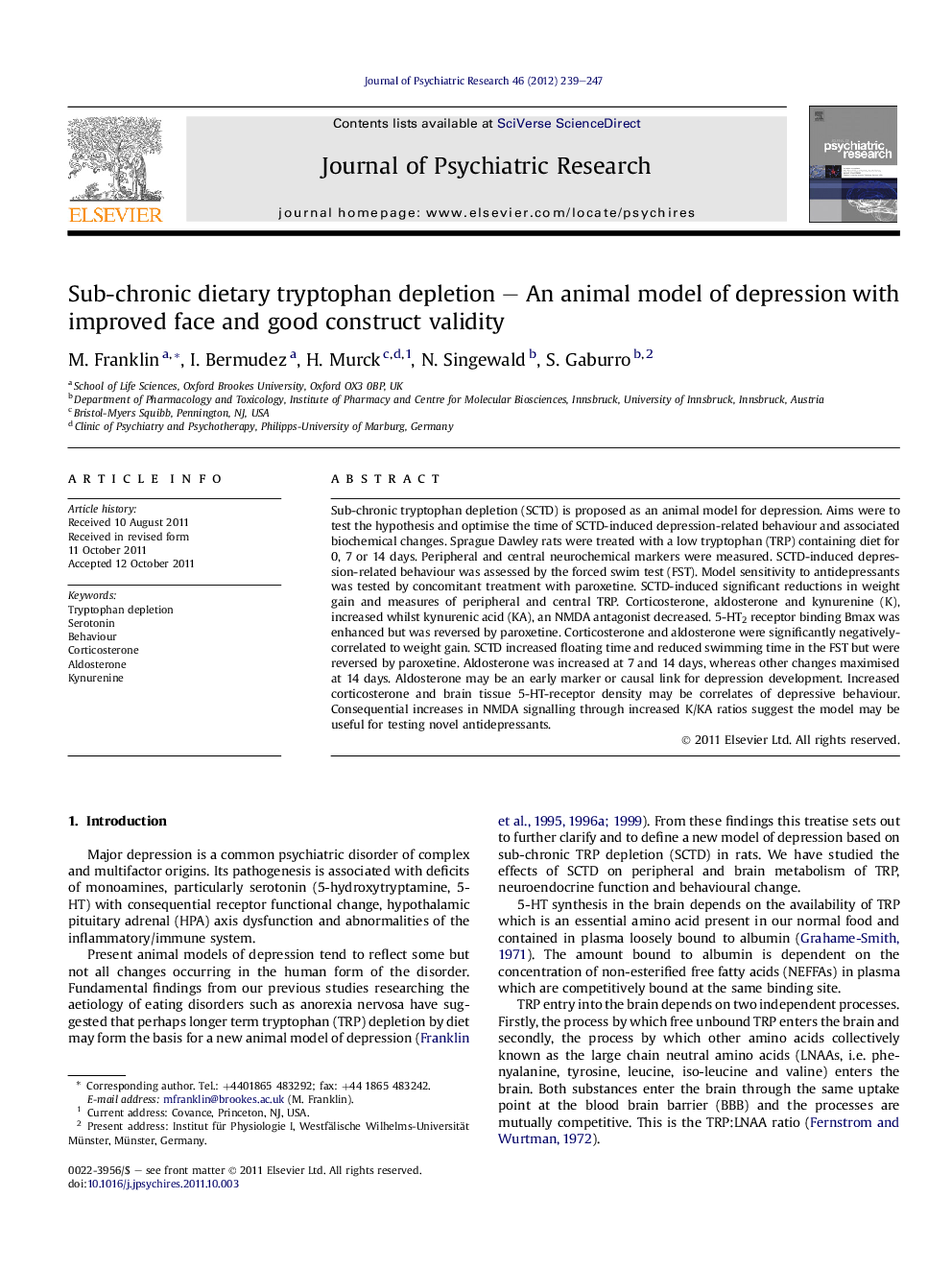| کد مقاله | کد نشریه | سال انتشار | مقاله انگلیسی | نسخه تمام متن |
|---|---|---|---|---|
| 327727 | 542965 | 2012 | 9 صفحه PDF | دانلود رایگان |

Sub-chronic tryptophan depletion (SCTD) is proposed as an animal model for depression. Aims were to test the hypothesis and optimise the time of SCTD-induced depression-related behaviour and associated biochemical changes. Sprague Dawley rats were treated with a low tryptophan (TRP) containing diet for 0, 7 or 14 days. Peripheral and central neurochemical markers were measured. SCTD-induced depression-related behaviour was assessed by the forced swim test (FST). Model sensitivity to antidepressants was tested by concomitant treatment with paroxetine. SCTD-induced significant reductions in weight gain and measures of peripheral and central TRP. Corticosterone, aldosterone and kynurenine (K), increased whilst kynurenic acid (KA), an NMDA antagonist decreased. 5-HT2 receptor binding Bmax was enhanced but was reversed by paroxetine. Corticosterone and aldosterone were significantly negatively-correlated to weight gain. SCTD increased floating time and reduced swimming time in the FST but were reversed by paroxetine. Aldosterone was increased at 7 and 14 days, whereas other changes maximised at 14 days. Aldosterone may be an early marker or causal link for depression development. Increased corticosterone and brain tissue 5-HT-receptor density may be correlates of depressive behaviour. Consequential increases in NMDA signalling through increased K/KA ratios suggest the model may be useful for testing novel antidepressants.
Journal: Journal of Psychiatric Research - Volume 46, Issue 2, February 2012, Pages 239–247